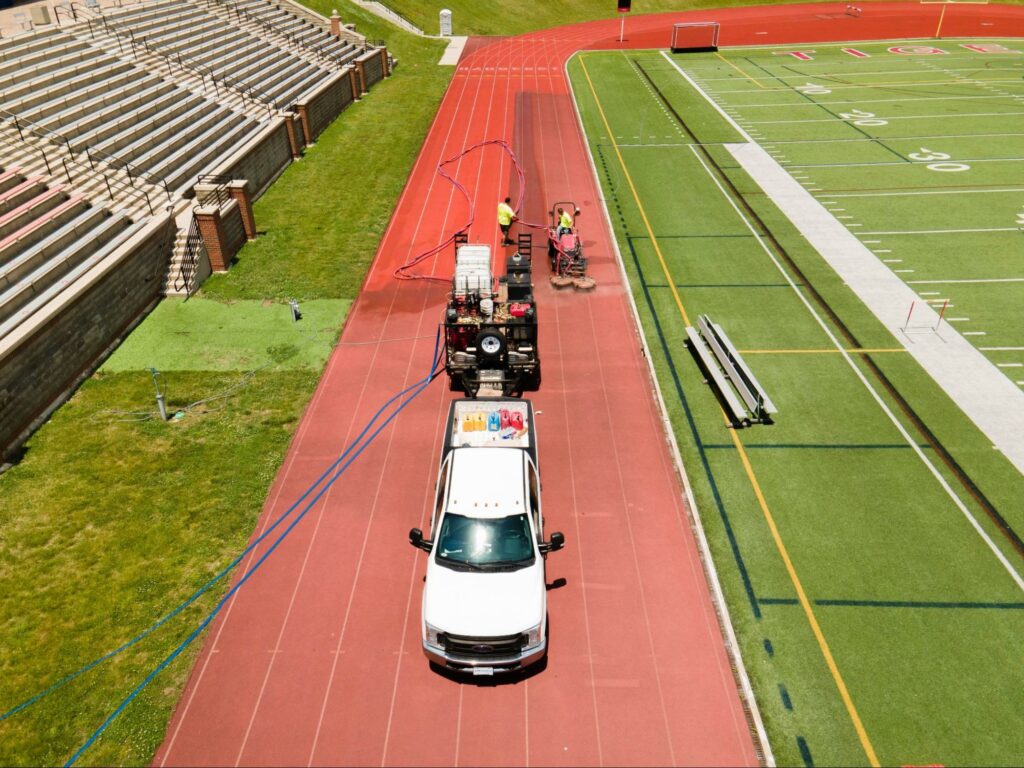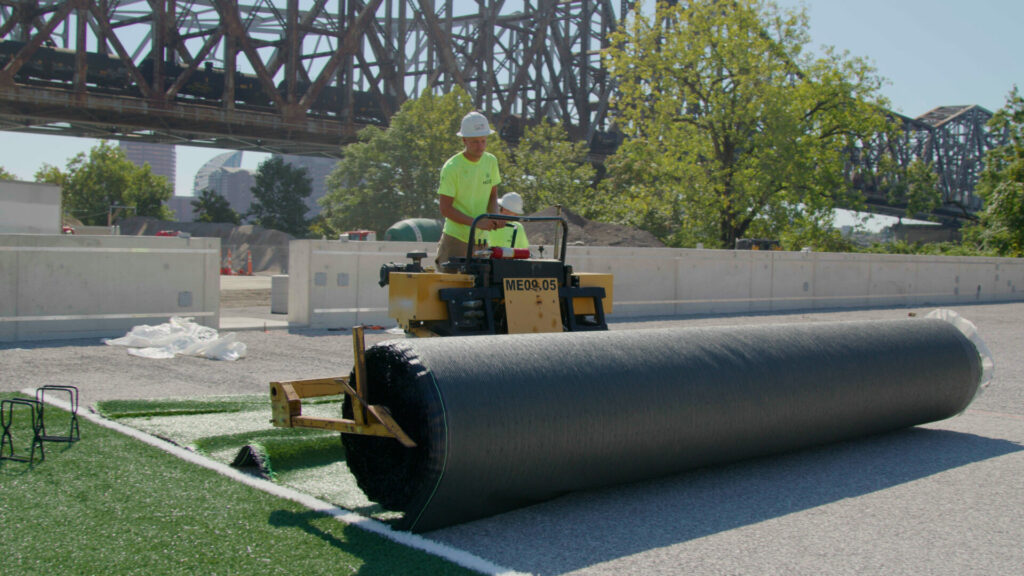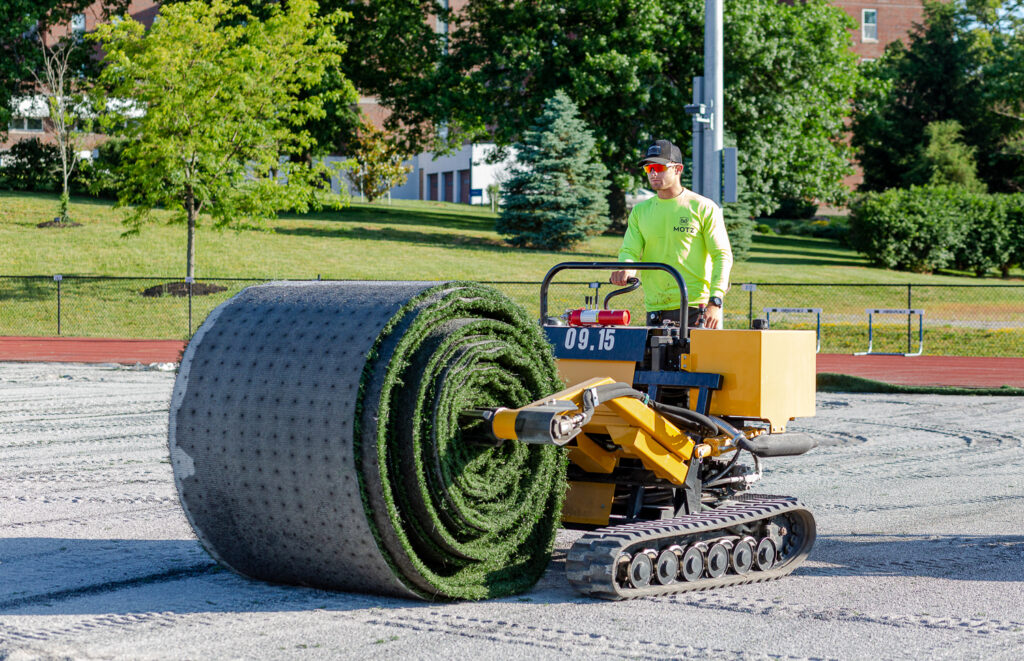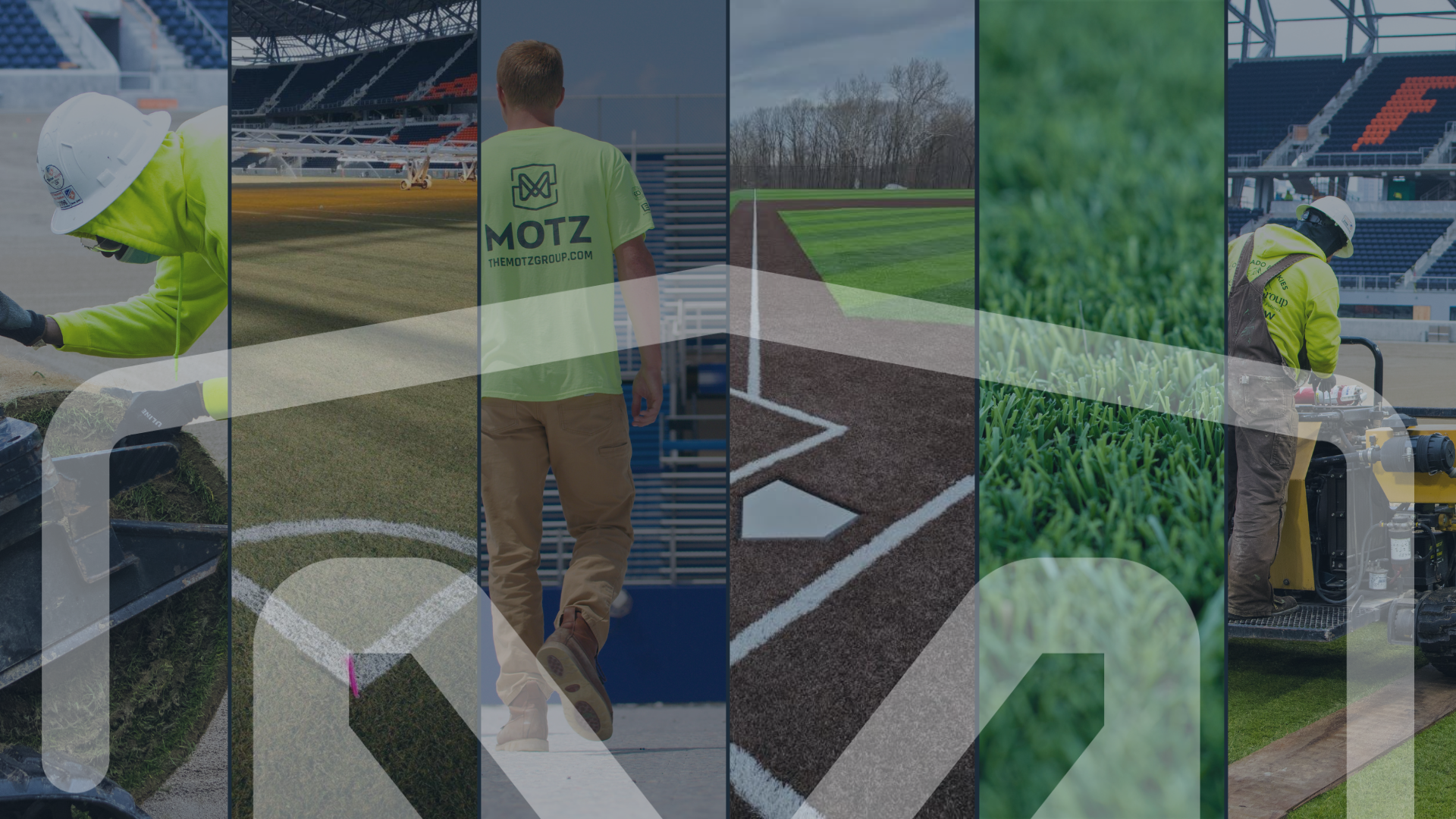
Sports Field Blog
Subscribe To Email Updates
Subscribe to our weekly newsletter and we’ll send updates straight to your inbox
5 Things to Know Before Using Athletic Equipment On Your Artificial Turf Sports Field
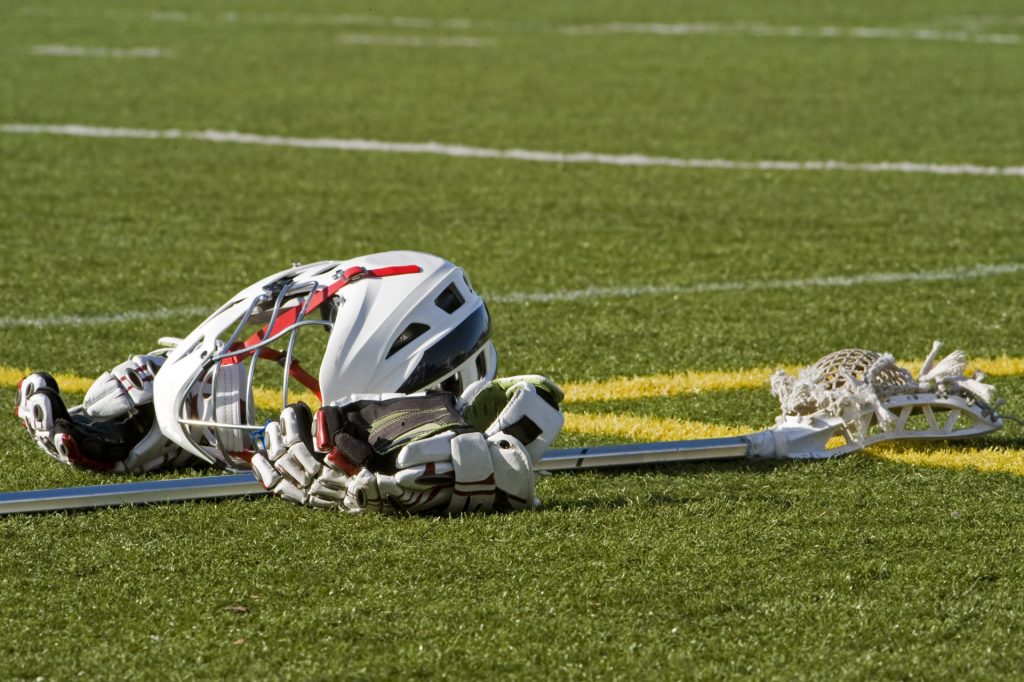
As one look at your synthetic turf sports field during an afternoon sports practice will tell you, it’s more than just athletes and coaches out on the field. It’s also all the equipment that comes with them.
From agility training equipment to assorted nets and goals, as a field owner who wants to preserve the lifespan and safety of your field, you’ll need to pay attention to how this equipment is used. There are also certain pieces of equipment that simply shouldn’t come onto your artificial turf in the first place or need modifications to be turf-friendly.
Below, we walk through everything you need to know about using athletic equipment on artificial sports turf, so that you can keep your field gametime ready.
1. Keep tabs on equipment quality
To protect your turf, keep equipment with rust stains and chipped paint off the field. Debris from old, worn-down equipment such as a soccer goal post can work its way into your turf system causing damage or contaminating your infill. Newer equipment also tends to be designed in a way that’s turf friendly, avoiding components — like spikes; more on that below — that are synthetic turf kryptonite.
2. Steer clear of spikes
Equipment with spikes, prongs, and sharp ends in general can gouge your synthetic turf surfacing, causing the need for premature replacement and repairs. Often, tents used for shade and water stations fall into this category. Opt instead to secure your tent with ropes and poles that are anchored by weights, and don’t use stakes under any circumstances. They’ll damage not only the surface of your turf but can penetrate through and ruin the backing of your artificial turf carpet, too.
Similarly, you’ll want to skip the spikes and use weights, like sandbags, to secure things like soccer goals and nets. Everything from lacrosse shooting targets to baseball pitching nets can be held in place this way. Go for coaching sticks with rounded and weighted bases, too, instead of sharp-ended ones.
3. Save the weights for the gym
Don’t bring dumbbells, barbells, kettlebells, or medicine balls onto the field. While your synthetic turf field can perfectly withstand athletes’ tumbles and tackles, concentrated units of weight routinely hitting the same area can damage your turf’s subbase. In extreme cases, we’ve even been called in to replace entire artificial turf fields that were ruined by medicine balls being used during sports practices.
4. Rotate practice spots
To preserve turf longevity, we always recommended rotating where, exactly, you’re holding practices on your field. But it’s an especially good idea to rotate practice locations if equipment is involved, as routinely setting up bulky equipment in the same area will accelerate your turf’s wear and tear. Rotating practice locations around the field, meanwhile, will limit repetitive wear patterns, keeping things looking and performing better for longer.
Just because you’re rotating locations doesn’t mean equipment always has to be hauled off the field after practices, though. So long as your equipment is in good condition, it’s perfectly fine to leave it out.
5. Approach certain pieces of equipment with caution
While some items — like the aforementioned tent stakes, spiked coaching sticks and free weights — should stay off the field entirely, there’s another subset of equipment that can be used, but with care.
For football practice, things like football sleds, weighted speed sleds and offensive lineman chutes are fine to bring onto the field, but you’ll want to take some precautions. Using sleds frequently can rip your artificial turf or wear patterns into your field, causing damage. So, if you have a defensive zone or sidelines off the body of your field, keep sleds to those areas in order not to impact the main field’s performance.
You’ll also want to keep sleds to routes similar to the field’s recommended grooming pattern, which differs between sports; a field used for baseball or softball, for instance, will have different grooming rules than fields used for football and soccer.
There’s plenty of equipment out there designed to be artificial turf field safe, as well, like rounded-end football dummies and plastic cones used for agility training. As the owner of an artificial turf field, it’s a good idea to invest in turf-friendly equipment to keep your field looking pristine for years to come.
When in Doubt, Check with Motz Experts
For more information and turf maintenance recommendations, check out our blog. You can also contact a Motz365 maintenance expert directly with any questions you may have.
Similar Blogs
